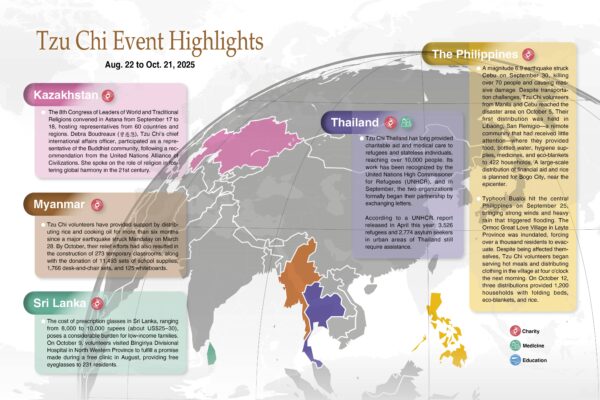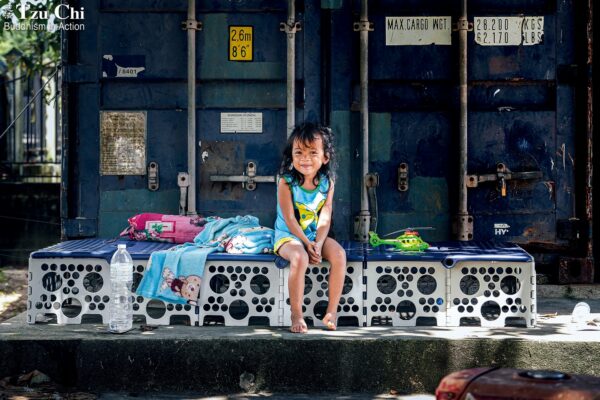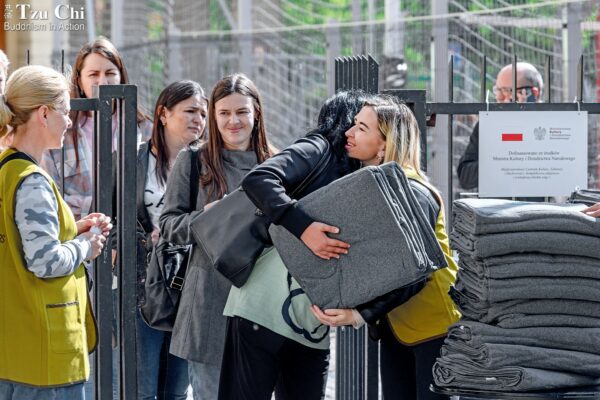A magnitude 6.8 earthquake rocked eastern Taiwan on September 18, 2022, damaging over 900 homes in Taitung and Hualien counties. Tzu Chi volunteers reached out to residents needing assistance to carry out repairs.
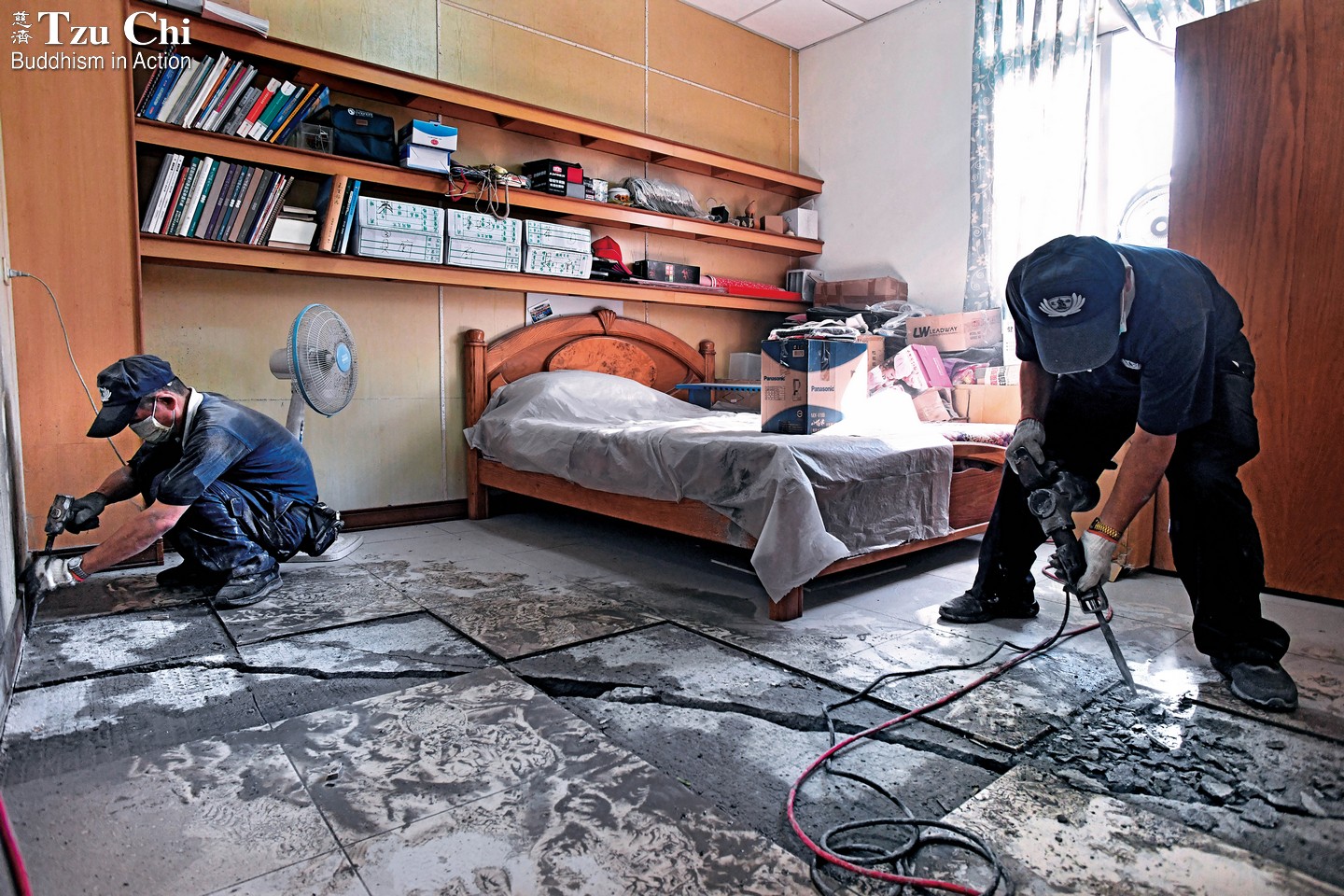
Volunteers at work on October 6 in a home damaged in the 9/18 quake. The tremor had badly cracked the floor. The volunteers first had to use power tools to remove the damaged floor tiles before new tiles could be installed. Lin Jia-ru
Here We Are, Yuli
By Ding Bi-hui
Translated by Wu Hsiao-ting
Photos by Yang Kai-cheng
They’ve come from all over Taiwan—with backgrounds in masonry, civil engineering, metalworking, or plumbing—to speed up recovery efforts after an earthquake.
It was early October in Hualien, eastern Taiwan. Two weeks had passed since a massive earthquake had hit eastern Taiwan, on September 18. The train station in the town of Yuli, less than 50 minutes by car from the epicenter, was all hustle and bustle. One tour bus after another pulled up to the station, paused for a few minutes to pick up passengers, then pulled away again just as quickly. The tremor had rendered the next train stop on the line out-of-service due to damage, so the buses were shuttling transfer passengers to the next available train station.
A similarly busy scene could be seen in front of the Tzu Chi Jing Si Hall in Yuli, though the atmosphere there was quite different from that in front of the train station. Volunteers from all over Taiwan had arrived at the Jing Si Hall by car, on bike, or on foot, carrying tools with them. They were all there for one purpose: to carry out repairs to homes damaged in the tremor.
On the road across from Yuli Elementary School, the back walls behind several households had collapsed or were badly cracked. Braving the hot sun, a team of volunteers started working there to rebuild or repair the walls. While some set out to take down damaged walls or make repairs, others used wheelbarrows to dispose of the masonry waste. Everyone was absorbed in their work, their faces soon covered in sweat and their blue uniforms soaked.
Volunteer Cai Ming-hong (蔡明鴻), from Taipei, northern Taiwan, explained that an advance team had assessed damage at the site on September 29. His group launched the repairs on October 2. They were using corrugated metal sheets and C-beams to repair or erect new walls. Such building materials were relatively easy to install and the finished walls would be more durable and earthquake-resistant than the original structures.
Cai said that only two families on the road had originally applied for repairs, but when their neighbors saw Tzu Chi volunteers visiting the neighborhood and learned about the foundation’s repair services, they asked for help repairing their places too. In the end, eight families received help from Tzu Chi.
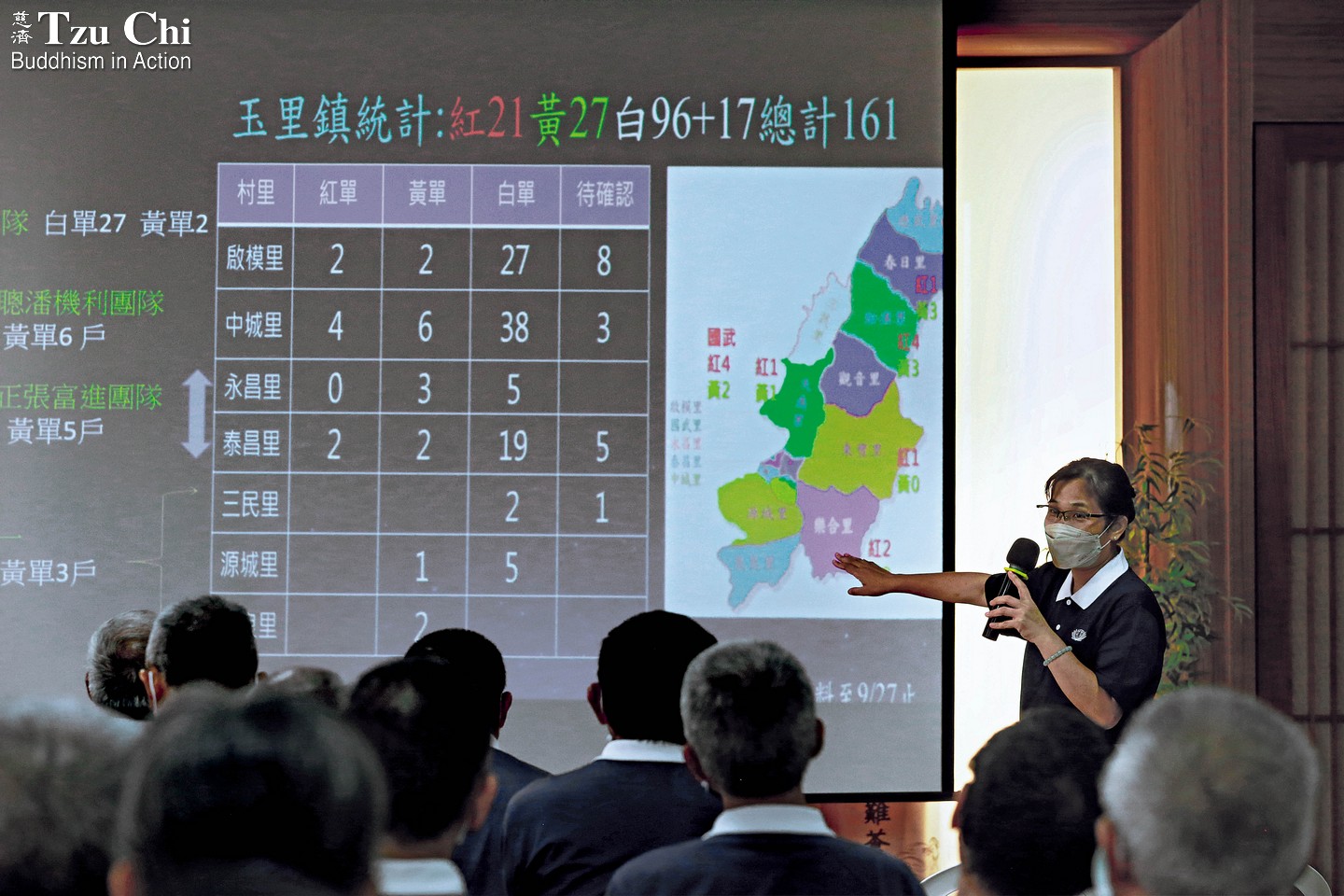
Liu Qiu-ling (劉秋伶), a staffer for the Tzu Chi Department of Charity Mission Development in Hualien, briefs volunteers on a repair project Tzu Chi undertook after the 9/18 earthquake. Xu Jin-sheng
Because most of the tools used on-site were prepared by the volunteers themselves, sometimes there was not enough to go around. When that happened, Cai immediately went to purchase some out-of-pocket. He didn’t mind spending his own money. He said it was more important that their work could be carried out smoothly. Besides, he knew the tools would come in handy again.
Jiang Chuan-yi (江傳義), from New Taipei City, northern Taiwan, is a plumber and electrician. He left behind his work—and opportunities to make money—in order to volunteer in Yuli this time. To him, helping others is more important than making money. He was thankful to his customers for being willing to wait for him.
Huang Zheng-xian (黃正賢), also from New Taipei City, has participated in many disaster relief operations before, including those after the 9/21 earthquake, Typhoon Morakot, and Typhoon Soudelor. He knows impermanence can strike at any time, so he always tells himself to seize every chance to serve. He is grateful for every opportunity to give. He knows that when it comes to the right thing, one should just do it.
It took five days to complete the reconstruction of the walls for the eight households. More than 30 volunteers participated in the work. Zhao Qi-wen (趙琦文), the chief of the neighborhood, visited the site every day. Sometimes she brought drinks for the volunteers, sometimes face masks or goggles. She never failed to remind the volunteers to be safe. “Thanks to Master Cheng Yen, and to all of you volunteers,” she said. “Without Tzu Chi’s help, our residents would have been quite at a loss for what to do.”
Zhao recalled that she received a phone call from a resident soon after the earthquake. The caller said amidst sobs that a wall at her home had collapsed and that the floor had cracked. She said she was scared and didn’t know what to do. Zhao comforted her on the phone and told her she had had a meeting with people from Tzu Chi and they had said they would help. The next evening, the same resident called Zhao again. There were no sobs this time. Instead, the caller told her with a hint of a smile in her voice that Tzu Chi volunteers had started making repairs to her home.
Mrs. Chen was one of the residents who benefited from the repair work offered by Tzu Chi. Knowing that the repairs to the walls on her road would come to an end on October 6, she opened her door early that morning, waiting for the Tzu Chi team to arrive. She explained that she had had to work when the repairs were being made, so she had never met the volunteers. She was very happy about the new wall rebuilt by them behind her home. She happened to have the day off, so she was finally able to say “thank you” to the volunteers in person.


